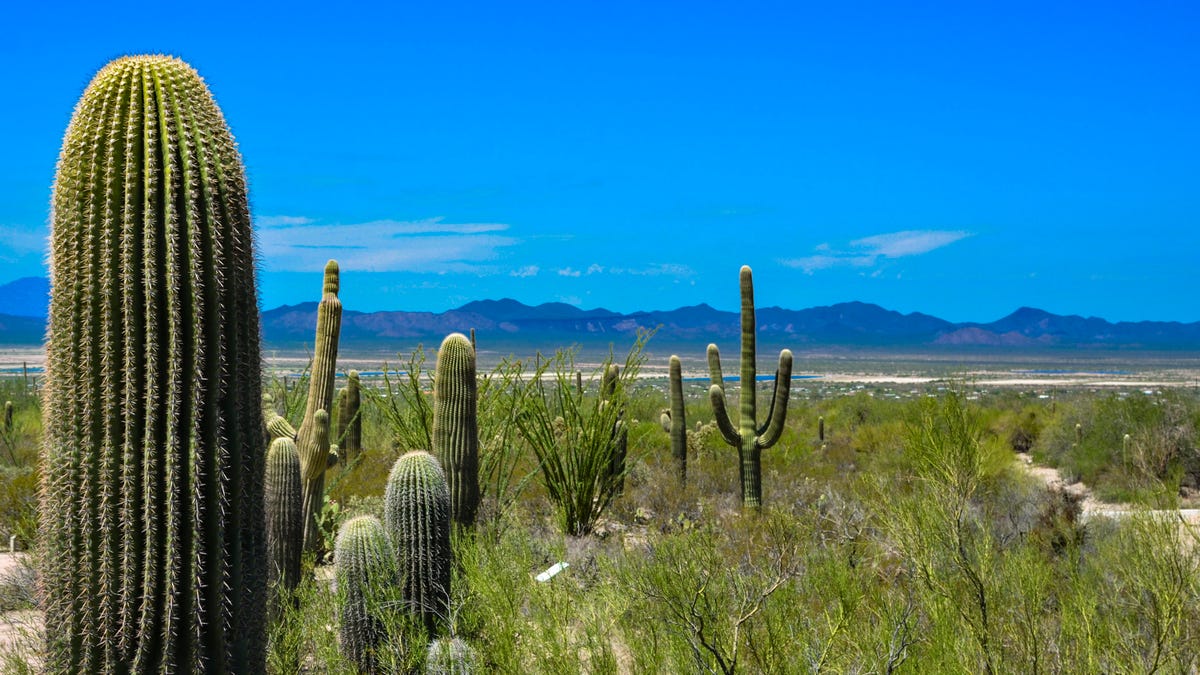A look at what national parks are trying to preserve
It's not easy protecting our nation's natural treasures. Here's what's at stake.

Saguaro National Park, located outside Tucson, Arizona, is home to nearly 2 million iconic saguaro cacti. The iconic Western cacti are a popular landscaping item, making them attractive to poachers.
Saguaro cacti can live to be 200 years old and 60 feet tall. They can sell for $100 per foot, plus extra for arms and nubs.
Eight years ago, Saguaro National Park rangers started embedding small microchips into cacti that, depending on their location and physical attributes, were most likely to be stolen.
Rangers inject a cactus with a small microchip, loaded into the needle of gun.
Cacti are injected with microchips similar to what you might put in your pet. Rangers can use a scanner to check for the microchip. They hope this will deter the poachers.
Saguaro National Park is also tracking saguaro cactus blooms. The park has a "cactus selfie stick" it uses to take pictures of the tops of tall cacti.
Scott Stonum, chief of science and resource management at Saguaro National Park, inspects one of the plants.
Petrified Forest National Park, near Holbrook, Arizona, is home to the world's largest collection of petrified wood, artifacts of an ancient forest buried beneath a river system approximately 225 million years ago.
Signs remind visitors to leave the fossilized wood for others to enjoy.
Bill Park, chief of science and resource management at Petrified Forest National Park, came up with the idea of comparing new and old pictures for a visual check on what's been taken.
Historic photos reveal that fewer pieces of petrified wood have been stolen than rangers had feared.
Wood petrifies when the remains of trees get covered by groundwater, rock and sand.
The original wood is gone, but the texture and even tree rings can still be seen.
Petrified wood is often colorful and interesting to look at, making it an attractive souvenir.
At Petrified Forest National Park, park-goers can walk down a mile-long trail through the Crystal Forest -- an area that was a lush forest during the Triassic era.
At Redwood National and State Parks, poachers hack burls out of trees. The wood is desirable to make items like furniture.
Burl poaching makes the trees vulnerable to disease. Burls are also how redwoods reproduce when the parent tree dies.
The vast Joshua Tree National Park, in Southern California, has a hard time monitoring when visitors vandalize and steal artifacts from the park.
Visitors can wander pretty much anywhere they want in Joshua Tree National Park.
At Great Smoky Mountains National Park, on the border of North Carolina and Tennessee, rangers are trying to keep people from stealing wild American ginseng roots.
Dry, wild ginseng can sell for $600 a pound. Rangers at Great Smoky Mountains National Park worry poaching is hurting the plant's population, especially if the ginseng is dug up before it's mature enough to produce seeds for new plants.
The park has been using an orange dye that marks the plants' roots. The dye glows orange when viewed under a blacklight.

